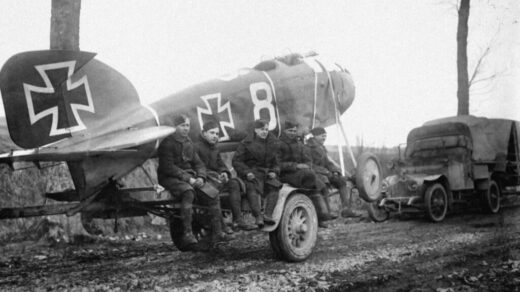Unclipping Oppression With The Paperclip in WWII
During the dark days of World War II, an ordinary office supply—the paperclip—emerged as an extraordinary emblem of resistance against Nazi occupation in Norway. The story begins in the autumn of 1940 when students at Oslo University sought a subtle yet powerful way to demonstrate their unity and national pride under the oppressive regime.
After Germany invaded Norway in April 1940, Norwegians were subjected to harsh Nazi cultural assimilation policies. The occupation saw the enforcement of anti-Semitic laws, coercive control over religious institutions, and the indoctrination of Nazi ideologies in schools. Amidst this, the Norwegian spirit of resistance remained unbroken.
In the face of strict bans on traditional symbols of Norwegian sovereignty, citizens began to don paperclips on their lapels. This innocuous item became a silent declaration of resistance and solidarity. It was an ingenious response to the propaganda and a symbol of being bound together against a common enemy.
The choice of the paperclip carried additional significance due to popular belief at the time. It was mistakenly thought that the paperclip was invented by Norwegian Johan Vaaler. While Vaaler did receive patents for a paperclip design, his version differed from the “Gem” paperclip widely used in Europe. Nevertheless, the association with a Norwegian inventor added a layer of nationalistic pride to the symbol.
Other Symbols of Wartime Resistance
Just as the paperclip became a symbol of resistance in Norway, many other emblems of defiance rose across occupied territories during World War II. From the red garments worn in Denmark to the Bobble hats in the Netherlands, each symbol served as a silent sentinel of solidarity against the oppressor. These symbols were often simple, everyday items, repurposed to represent unity and a quiet rebellion. They provided a means for the oppressed to express national pride and resistance without the need for words, embodying the collective spirit and determination to resist the totalitarian regimes that sought to control them.
While the paperclip was a tool for binding papers, its use as a symbol of resistance highlights the evolution of ordinary objects into powerful instruments of propaganda and protest. This transformation was not unique to Norway; it occurred in various forms across the globe throughout the conflict.
The paperclip, a product patented by Samuel B. Fay in 1867 for attaching tickets to fabric, thus became a staple of resistance, demonstrating the adaptability and ingenuity of oppressed populations in the face of adversity.
The H7 monogram, which referred to King Haakon VII of Norway, became another clandestine symbol of resistance against the Nazi occupation during World War II. This monogram represented loyalty to the Norwegian royal family and served as a silent protest against the invaders.
It was often used in conjunction with the paperclip to signify allegiance to the Norwegian government in exile and defiance of the Nazi-imposed regime. The H7 emblem, like the paperclip, was banned by the occupiers, and wearing it was a punishable offense. However, the risk did not deter Norwegians from displaying it, showing the depth of their national pride and their unyielding spirit of resistance.
What You Didn’t Know About The Paperclip
- Beyond being a symbol of resistance, paperclips were also used pragmatically by Norwegian resistance members to fasten together secret documents and communications.
- Resistance fighters sometimes used the positioning of the paperclip on their clothing as a method of silent communication, indicating meeting places or times.
- The German occupiers eventually caught on to the symbol and began to confiscate paperclips, with reports of bans on the sale of paperclips unless accompanied by a satisfactory explanation.
- It was not just adults who displayed the paperclip as a sign of resistance; Norwegian schoolchildren also participated in this subtle form of protest.
- The use of the paperclip was a gesture inspired in part by Henrik Ibsen’s play “An Enemy of the People,” which emphasizes the importance of standing up for one’s beliefs.
- There were various designs for paperclips used as symbols, and sometimes other items like coins or buttons were attached to the paperclips to further differentiate the resistance members from collaborators.
- Members of the Norwegian royal family, in exile, were aware of the paperclip symbol and considered it a heartening sign of the unbroken Norwegian spirit.
- The Nazis attempted to counteract the symbol’s influence by creating their propaganda, depicting the paperclip and its wearers as unpatriotic.
- After the war, the paperclip became a motif in Norwegian memorials and commemorative ceremonies, honoring those who had stood against the occupation.
- The story of the paperclip as a symbol of Norwegian resistance reached other nations, and after the war, it was often recounted in international accounts of wartime defiance and civilian courage.
FAQs
Why should you consider the paperclip as an important historical symbol?
The paperclip is not just a tool for keeping your papers together; it represents unity and resistance. During WWII, Norwegians used it to silently show defiance against Nazi occupation. By recognizing the symbol, you honor the courage of those who stood against oppression.
How can you wear a paperclip to honor WWII resistance movements?
You can wear a paperclip on your lapel or tie to pay homage to the resistance fighters. This small act connects you to a rich history of non-violent protest and can serve as a conversation starter about the importance of standing up for freedom and unity.
How can you use the paperclip to teach others about resistance movements?
When discussing WWII, introduce the paperclip as a symbol of civilian courage. You can encourage students or peers to wear paperclips during the lesson to create a tangible connection to history.
How might you incorporate the paperclip into resistance art?
If you’re artistically inclined, consider creating artwork that includes the paperclip symbol. Whether you’re crafting a sculpture, a painting, or a piece of jewelry, this icon can serve as a powerful reminder of resistance and solidarity in the face of adversity.
How can discussing the paperclip impact your understanding of resistance?
By engaging in discussions about the paperclip’s role during WWII, you delve deeper into the complexities of resistance movements. It can also draw parallels to modern forms of peaceful protest, enhancing your understanding of contemporary social issues.
The Ethics of Symbolic Resistance
The use of the paperclip raises questions about the effectiveness and ethical implications of symbolic resistance. Unlike active combat, symbolic gestures do not directly halt aggressors, but they can unify and bolster the morale of those oppressed. The paperclip’s role in Norway invites debate on whether such symbols can genuinely contribute to a resistance movement or if they are merely a means of quiet defiance with limited practical impact.
In the context of the digital era, the way we perceive symbols like the paperclip has evolved. Resistance movements now often spread through hashtags and viral images online. There’s a discussion to be had about the transition from physical symbols of resistance, which risked lives when displayed, to digital icons that can be shared anonymously, questioning if this modern approach dilutes the sense of personal risk and sacrifice that came with historical acts of defiance.
The commercialization and appropriation of historical symbols for contemporary causes is a contentious issue. While the paperclip symbolized a unified stand against Nazism during WWII, its modern-day use by various groups could be seen as either a powerful homage or a dilution of its original significance. This topic explores where the line should be drawn in repurposing historical symbols of resistance.
There’s a debate to be had about the inclusion of such nuanced historical elements as the paperclip in educational curricula. Some argue that it’s essential for a comprehensive understanding of history, while others see it as an anecdotal detail that may distract from larger historical narratives. This conversation touches upon the broader topic of what details are deemed significant enough to shape a nation’s historical education.
The role of covert symbols like the paperclip in sustaining mental resilience among oppressed populations is an area ripe for debate. Such symbols can provide a sense of solidarity and hope, but they also carry the risk of punishment if discovered. The psychological interplay between fear and camaraderie in these acts of resistance is complex and worth examining to understand the full impact of these silent gestures.
The paperclip, an everyday object, took on a new meaning as a badge of resistance, a representation of nationalistic pride bolstered by the mistaken belief that it was a Norwegian invention. This covert emblem, alongside others like the H7 monogram, signified a silent yet powerful stand against the Nazi ideology and served as a beacon of hope and solidarity, even among the risks of severe punishment.



